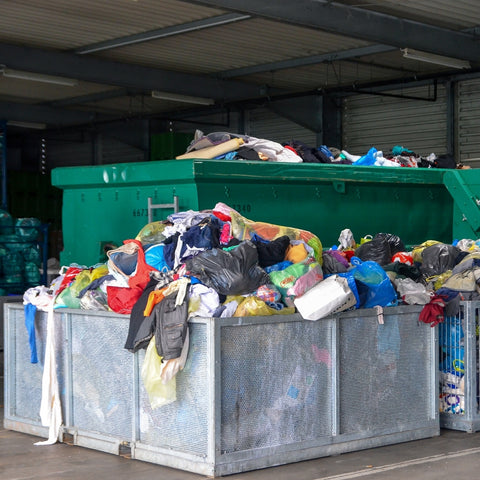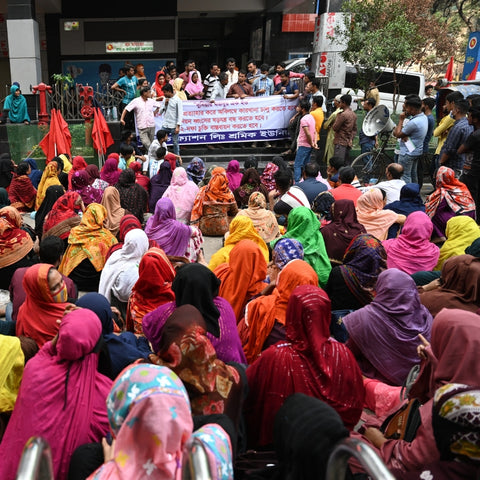goes beyond the price tag of a garment.
The fashion industry has always been associated with glamour, style, and luxury. However, beneath the surface lies a darker side of the industry that many consumers are not aware of: the true cost of fashion. The fast-paced, ever-changing world of fashion is not only damaging to the environment, but it also has a significant impact on the people involved in its production.

The Environmental Impact of Fashion
The fashion industry is one of the largest polluters in the world. From the production of raw materials to the manufacturing process, the fashion industry has a significant impact on the environment. The production of cotton, for example, requires vast amounts of water, pesticides, and fertilizers. The World Wildlife Fund estimates that it takes 2,700 liters of water to produce one cotton t-shirt, which is enough water for one person to drink for two and a half years.
In addition to the impact on water resources, the fashion industry also contributes to air pollution through the manufacturing process. The production of synthetic fabrics, such as polyester and nylon, results in the emission of harmful gases such as nitrous oxide. These gases contribute to global warming and have a significant impact on the environment.
The fashion industry also has a significant impact on the world's natural resources. The production of fabrics, particularly synthetic fabrics, requires a significant amount of oil, which is a non-renewable resource. In addition, the production of clothing requires a significant amount of energy, which often comes from non-renewable sources such as coal and natural gas.

The Social Impact of Fashion
The true cost of fashion extends beyond the environment to the people involved in its production. The fast fashion model relies heavily on cheap labor, particularly in developing countries where labor laws are less strict. Workers in these countries are often paid very low wages and work in unsafe conditions.
The 2013 Rana Plaza factory collapse in Bangladesh, which killed over 1,100 workers, brought international attention to the issue of worker safety in the fashion industry. The tragedy highlighted the dangers of the fast fashion model and the pressure placed on factories to produce clothing quickly and cheaply.
In addition to the exploitation of workers in developing countries, the fashion industry also has a significant impact on the workers in developed countries. In the United States, for example, workers in the garment industry are often paid very low wages and work in unsafe conditions. The pressure to produce clothing quickly and cheaply often leads to the exploitation of workers and a disregard for worker safety.

The Ethical Impact of Fashion
The true cost of fashion also includes the ethical impact of the industry. The constant turnover of trends perpetuates a culture of disposability and consumerism. Consumers are pressured to constantly update their wardrobes to stay on-trend, resulting in a significant amount of waste.
The fashion industry also has a significant impact on animal welfare. The production of fur, for example, often involves the inhumane treatment of animals. In addition, the production of leather requires the use of toxic chemicals that are harmful to both the environment and the workers involved in the production process.
As consumers, we have a responsibility to make informed choices about the clothes we buy and wear. Here are some ways in which we can make a difference:
One of the most effective ways to reduce the impact of fashion on the environment and workers is to buy fewer clothes. This means investing in high-quality pieces that are made to last, rather than buying cheap clothes that will only last a few wears. When we choose well-made clothes, we reduce the demand for fast fashion, which in turn reduces the pressure on workers to produce clothes quickly and cheaply.
There are many brands that prioritize sustainability and ethical production. These brands often use environmentally friendly materials, pay their workers fair wages, and provide safe working conditions. By supporting these brands, we can encourage the fashion industry to adopt more sustainable and ethical practices.
Buying second-hand clothing is another way to reduce the impact of fashion on the environment. It helps to keep clothing out of landfills and reduces the demand for new clothes. Second-hand clothing can be found at thrift stores, consignment shops, and online marketplaces.
Practicing mindful consumption means being aware of our consumption habits and making choices that align with our values. It means asking ourselves questions such as, "Do I really need this?" and "What impact does this purchase have on the environment and workers?" Mindful consumption also involves taking care of the clothes we already own, repairing them when necessary, and donating or recycling them when they are no longer useful.
Individual actions are important, but they are not enough to create systemic change in the fashion industry. We need to advocate for change at the industry level by demanding better labor standards, promoting sustainability, and supporting legislation that protects workers and the environment. This can be done through social media, petitions, and contacting lawmakers and fashion industry leaders.
Finally, the true cost of fashion goes beyond the price tag of a garment. It includes the environmental impact of the industry, the exploitation of workers, and the social and ethical implications of fast fashion. As consumers, we have the power to make a difference by buying less, choosing well, supporting sustainable and ethical brands, buying second-hand clothing, practicing mindful consumption, and advocating for change. By doing so, we can create a fashion industry that is sustainable, ethical, and respectful of the environment and the people who make our clothes.



